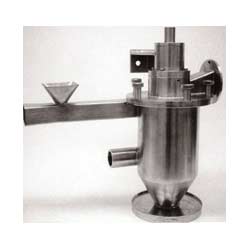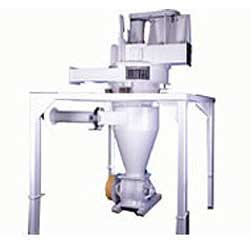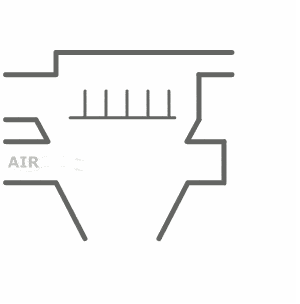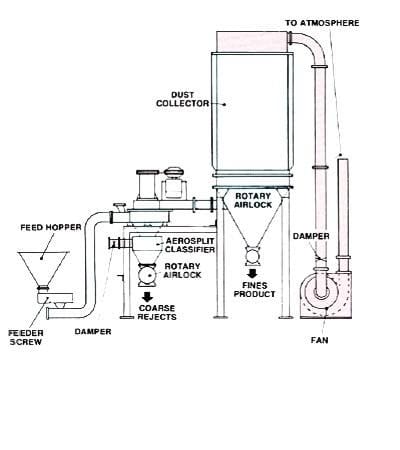Mini-Split Air Classifier
Features: Operating range of 1 to 75 MicronsFeed rate for 1 to 75 kilograms/hourNarrow size distributionsStainless steel contact partsVersatile, heavy-duty design, and vibration-freeAir purged bearings, easy disassembly,…

Features: Operating range of 1 to 75 MicronsFeed rate for 1 to 75 kilograms/hourNarrow size distributionsStainless steel contact partsVersatile, heavy-duty design, and vibration-freeAir purged bearings, easy disassembly,…

Prater MAC Air Classifiers process dry materials to exceptional fineness and uniformity over a wide range of feed variations. Offering separations from 3 to 150 micron, they are ideal for use in closed-circuit with a con…

Prater Air Classifiers are designed and built for superior performance and long life. Our proprietary design ensures that feed material entering the classifying vortex is unimpeded by any re-circulating coarse fractions. Additionally, an adjustable secondary air stream improves particle collection. Prater Air Classifiers can quickly be installed in existing air systems with minimal modification.
Important features of Prater Air Classifiers include:
Durable, heavy-duty fabrication in either carbon or stainless steel
State-of-the-art, precision manufactured, constant diameter rotors for the most efficient separation possible.
Precise control of the cut point by varying rotor speed
Adjustable secondary air system for greater capture of near-size particles
Low airflow resistance (pressure drop) designed for low-power usage
Optional ceramic, tungsten, polyurethane, or rubber lining for abrasive service
Prater Air Classifiers utilize adjustable centrifugal force to separate particles of different sizes within a pneumatic circuit. The raw product is conveyed through a primary air inlet. Once in the classifier, aerodynamic drag forces pneumatically act upon the particles. The force varies depending on the diameter and density of the particles in the classifier.
Spiraling particles are directed toward the classifier rotor, where one of two things occur, depending on particle size:
Drag force on smaller, more aerodynamically particles exceeds the centrifugal force exerted by the rotor, and they pass through the machine as fines; or
Centrifugal force overcomes the drag force, causing larger, less aerodynamically particles to accelerate away from the rotor. A cyclonic chamber collects this coarse fraction and enables discharge through a rotary airlock fitted to the bottom of the machine.
The balance between the drag force and the centrifugal force determines the cut-point. When the forces are equal, particles have a 50/50 chance of passing out of the system as fines. The cut-point is variable and can be controlled by adjusting the rotor speed.
Collection efficiency is enhanced by using a secondary air inlet, an adjustable air stream that moves upward into the classification zone. This airstream increases the residence time of agglomerated and near-size particles, thus allowing them to be classified with the fine product stream..
The accompanying diagram illustrates how Prater Air Classifiers can be integrated into your workflow systematics.

Let us know how we can serve you. We can custom-build almost any air classifier needed for your business operations. If there is anything specific that you require in an Air Classifier not found in our standard offering, we will design and build the ideal solution for you. In addition, if you already own a Prater Air Classifier in need of maintenance or other attention, contact us for immediate service.